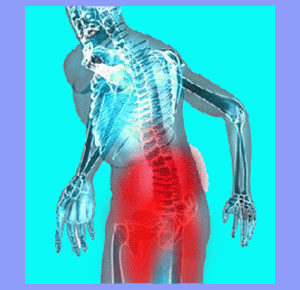
Are you suffering from myofascial pain or sciatica? These types of pain are often confused with one another to the detriment of the patient. In fact, many patients with both types of pain are often told they are suffering from the other and waste time, money and hope pursuing treatment that is not actually indicated for their real source of suffering.
What makes sciatica and pseudo-sciatica different from myofascial pain? Are the conditions even similar in any way? How can such a high rate of misdiagnosis occur given the many differences between sciatic nerve pain syndromes and MPS? These are all very important questions and we will seek to answer these and more during the course of this discussion.
This dialog explores the similarities and differences between sciatica and myofascial pain. We will make every attempt to help patients to discover the common problem of misdiagnosis that might compromise their therapeutic results.
Myofascial Pain or Sciatica Similarities
Both sciatica and MPS can affect large areas of the lower body. Symptoms are often seen in major muscle groups in the buttocks, legs and/or feet. Symptoms of both syndromes might worsen given particular positions, activities or other exacerbating factors.
There is no verifiable test to confirm or exclude either syndrome when performing diagnostic processing, although there are many more tools available to help confirm sciatica as a symptomatic expression compared to MPS, which has no logical diagnostic criteria.
Both types of pain are often found in chronic and treatment-resistant varieties, creating long-term problems for the patients. Similarly, both conditions are known to flare-up due to known or idiopathic circumstances to acute intensities.
MPS and Sciatica Differences
Although similar in some of the general ways outlined above, there are actually many factors which make MPS very different from sciatica and pseudo-sciatica as detailed below:
MPS is similar to FMS in that no causative process has ever been verified as its source. Doctors have absolutely no idea what causes MPS, nor much idea about how to successfully treat it, besides poisoning the patient with incredibly powerful and health-damaging drugs. On the other hand, both sciatica and pseudo-sciatica can most often be traced to a definitive origin. Unfortunately, this source process is frequently misdiagnosed, leading to poor therapeutic outcomes and creating the fierce reputation that sciatica has earned in modern medical history.
MPS is actually a diagnosable condition, despite the criteria for the diagnosis being ludicrous and unscientific. Sciatica and pseudo-sciatica are merely symptomatic expressions of some underlying condition of anatomical, systemic or mindbody origin. Sciatica is not a diagnosis unto itself and technically is not even a “condition”.
All types of spinal sciatica exist because of nerve root irritation. Symptoms will follow the innervation pattern of the sciatica nerve. Pseudo-sciatica can exist for many possible reasons as detailed on this website, but will also generally follow the locations of the sciatica nerve. MPS is often found in the same lower body areas, but also might exist throughout the body including way above the area where the sciatic nerve exists.
Myofascial Pain or Sciatica Factsheet
We have already written so much about sciatica and pseudo-sciatica on this web resource. So to conclude this essay, we will focus on providing some factual information about myofascial pain, also called MPS:
MPS is a diagnosis closely related to fibromyalgia; another condition which has helped to foster the epidemic of chronic pain in the developed world through diagnostic incompetency and care provider greed.
We see little evidence that the diagnostic criteria applied to MPS are valid at all. The vast majority of patients who are labeled with the myofascial pain diagnosis have symptoms which are clearly far more wide-ranging than just the fascia and muscles. In fact, most of these patients demonstrate the classic systemic signs of mindbody suffering which are usually dismissed by care providers as unrelated symptoms…
There is no doubt that the suffering of MPS patients is very real, much in the same manner as that of fibromyalgia patients. In fact, this suffering is some of the worst in severe expressions. However, we take exception to the MPS diagnosis itself, since it is unscientific and tends to force patients to pursue profitable care that is rarely successful, rather than look deeper for their true underlying origin of pain.
Sciatica > Spinal Decompression for Sciatica > Myofascial Pain or Sciatica





